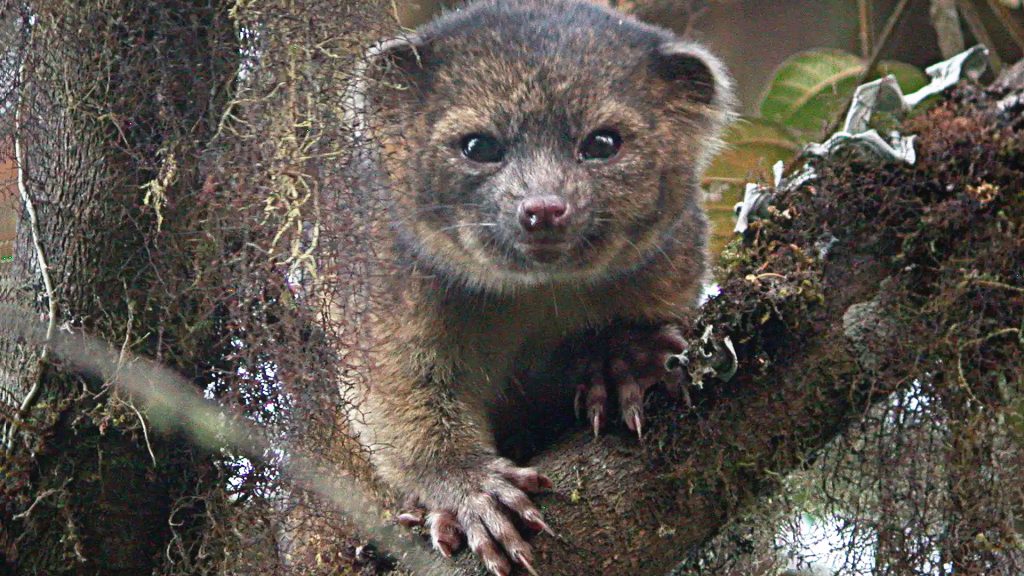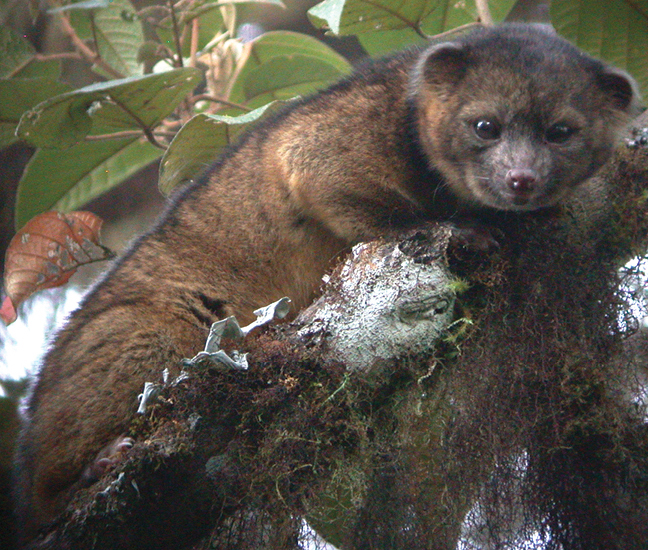
Meet the olinguito, a tiny elusive mammal described by scientists as a cross between a teddy bear and a house cat.
Olinguitos were misidentified for over a century, despite the fact that there are many specimens in museum collections and some have even resided at zoos. It wasn’t until 2013 that a team researching its cousin, the olingo, realized that these captivating creatures were a new species entirely.

Kristofer Helgen and his team at Smithsonian’s National Museum of History analyzed countless museum specimens and trekked through cloud forests of Ecuador for ten years before confirming the find.
The researchers were tipped off that these guys were not in fact olingos by the smaller, differently shaped skull; their smaller overall size, and longer, denser coat. Field studies also revealed that these individuals thrived in elevations much higher than olingos, between 5,000 and 9,000 feet above sea level.
“The discovery of the olinguito shows us that the world is not yet completely explored, its most basic secrets not yet revealed,” Helgen told the Smithsonian. At the time of their discovery, olinguitos were the first new mammal described in the western hemisphere in over 3 decades.

Olinguitos are members of the raccoon family with dense coats of thick, wooly fur in shades of orange and reddish brown. Found only in the cloud forests of Colombia and Ecuador, these solitary, nocturnal creatures subsist on a diet of fruits, insects, and nectar. They’re strictly arboreal and quite acrobatic, and can easily leap from tree to tree. Combined with their reclusive nature, this makes them extremely difficult to spot.
While these mammals aren’t at immediate risk of extinction, an estimated 40 percent of their potential range has already been deforested to make space for agricultural and urban development.




